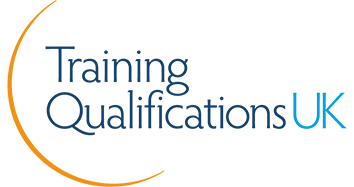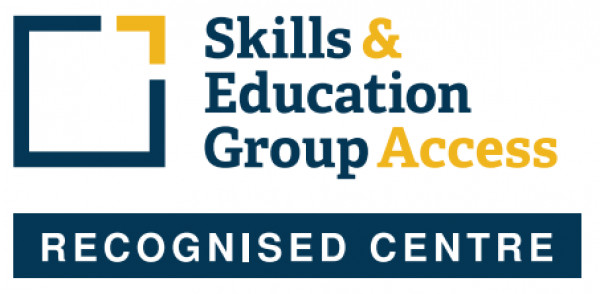International Human Resource Management
 97.5%
97.5%
- SALE Savings End Midnight Wednesday 30th April
- SALE Savings End Midnight Wednesday 30th April
International Human Resource Management
For many years, human resource management was seen as the "poor relation" of the business functions. Limited to a low-key administrative role, concerned with employee welfare and payroll administration, or at best a trouble-shooting role concerned with resolving labour-management conflicts, human resource professionals were rarely seen as having any significant role to play in determining the organisation's overall strategy. In the words of Peter Drucker, personnel was the "trash can".
How things have changed. Increasingly, managers are now realising that the key resource determining the effectiveness of an organisation is its human resources: its people. As long ago as the late 1970s and early 1980s, North American and European managers were beginning to realise that what made Japanese businesses so different, so superbly competitive, was their approach to managing people.
The American management consultants, Peters and Waterman, searching for examples of business excellence in the US, decided that the key lay in the distinctive cultures of their "excellent" businesses.
Current debates in strategic management focus on the conditions for the creation of sustainable competitive advantage. It is becoming clear that many of the traditional marketing and product development bases of competitive strategy can be imitated by competitors relatively easily - the advantage gained through such strategies is often simply not sustainable.
This is less the case with human resource management. The way an organisation treats its staff, an organisation's culture and its approach to teamwork and innovation are all potentially distinctive and value-creating characteristics that have the potential to create competitive advantage.
Furthermore, the very idiosyncrasy and social complexity of such characteristics means that once created any advantage is likely to be sustainable simply because competitors will find it difficult to imitate.
Modules
Unit 1: Approaches to International Human Resource Management
Introduction
Objectives
What is human resource management?
What is international HRM?
References
Unit 2: Context of International HRM
Introduction
Objectives
The organisational context
The cultural context
References
Unit 3: Staffing the Organisation
Introduction
Objectives
Human resource planning
Approaches to international staffing
Expatriate staffing
Integration without parent-country expatriates
Selecting expatriates
Selecting host- and third-country nationals
International differences in selection practices
Summary
References
Unit 4: Managing Performance in an International Context
Introduction
Objectives
What is performance management?
Appraising individual performance
Expatriate performance management
Appraising host-country nationals
Summary
References
Unit 5: Training and Developing the International Workforce
Introduction
Objectives
Training and career development for expatriates
Training and development of host-country nationals
Training and culture in the local environment
Developing a global perspective
Summary
References
Unit 6: Reward Management for International HRM
Introduction
Objectives
Aims of international reward management
Components of international remuneration
Approaches to international reward management
Taxation
Pay and motivation in an international context
Summary
References
Unit 7: Repatriation Policies and Practices
Introduction
Objectives
The repatriation process
Career development issues
Easing the repatriation process
Summary
References
Unit 8: Employee Relations and the International Firm
Introduction
Objectives
Trade union recognition
Country of origin and employee relations
Response from labour
Regional integration and employee relations
Summary
References
Unit 9: Issues and Challenges in International HRM
Introduction
Objectives
Country case studies: China and India
Social responsibility in an international context
Strategic IHRM
Summary
References
Appendix
Entry Requirements
There is no experience or previous qualifications required for enrolment on this course. It is available to all students, of all academic backgrounds.
All course fees, inclusive of all payment plans including our Premium Credit Limited option, must be settled before certification can be ordered.
*You will have access to the course for 24 months.

Assessment Method
After each lesson there will be a question paper, which needs to be completed and submitted to your personal tutor for marking. This method of continual assessment ensures that your personal tutor can consistently monitor your progress and provide you with assistance throughout the duration of the course.
What's Included
- All study materials
- Study Guide
- Full Tutor and Admin support
Course Text
For this course, you will be required to purchase the following textbook:
Peter J Dowling, Denice E Welch and Randall S Schuler (1999) International Human Resource Management: Managing People in a Multinational Context, third edition, Cincinatti, OH: South-Western College Publishing.
On successful completion of your course you will receive the learndirect Certificate of Completion of Training in International Human Resource Management.
Your course certificate will also state the number of CPD points/hours the course is eligible for.
View a sample of the certificate (opens in new window)
learndirect is one of the largest integrated providers of courses and qualifications, training, and employment services in the UK
- Each year around 6,000 businesses equip their staff for success with learndirect
- learndirect have helped more than 75,000 businesses equip their employees with the skills needed to improve productivity.
- Almost 700,000 maths and English test passes have been achieved with learndirect.
- 300,000 people fulfilled their career ambitions last year with learndirect.
- Over 250,000 apprentices have achieved with learndirect.
- SALE Savings End Midnight Wednesday 30th April
- SALE Savings End Midnight Wednesday 30th April
International Human Resource Management
For many years, human resource management was seen as the "poor relation" of the business functions. Limited to a low-key administrative role, concerned with employee welfare and payroll administration, or at best a trouble-shooting role concerned with resolving labour-management conflicts, human resource professionals were rarely seen as having any significant role to play in determining the organisation's overall strategy. In the words of Peter Drucker, personnel was the "trash can".
How things have changed. Increasingly, managers are now realising that the key resource determining the effectiveness of an organisation is its human resources: its people. As long ago as the late 1970s and early 1980s, North American and European managers were beginning to realise that what made Japanese businesses so different, so superbly competitive, was their approach to managing people.
The American management consultants, Peters and Waterman, searching for examples of business excellence in the US, decided that the key lay in the distinctive cultures of their "excellent" businesses.
Current debates in strategic management focus on the conditions for the creation of sustainable competitive advantage. It is becoming clear that many of the traditional marketing and product development bases of competitive strategy can be imitated by competitors relatively easily - the advantage gained through such strategies is often simply not sustainable.
This is less the case with human resource management. The way an organisation treats its staff, an organisation's culture and its approach to teamwork and innovation are all potentially distinctive and value-creating characteristics that have the potential to create competitive advantage.
Furthermore, the very idiosyncrasy and social complexity of such characteristics means that once created any advantage is likely to be sustainable simply because competitors will find it difficult to imitate.
Modules
Unit 1: Approaches to International Human Resource Management
Introduction
Objectives
What is human resource management?
What is international HRM?
References
Unit 2: Context of International HRM
Introduction
Objectives
The organisational context
The cultural context
References
Unit 3: Staffing the Organisation
Introduction
Objectives
Human resource planning
Approaches to international staffing
Expatriate staffing
Integration without parent-country expatriates
Selecting expatriates
Selecting host- and third-country nationals
International differences in selection practices
Summary
References
Unit 4: Managing Performance in an International Context
Introduction
Objectives
What is performance management?
Appraising individual performance
Expatriate performance management
Appraising host-country nationals
Summary
References
Unit 5: Training and Developing the International Workforce
Introduction
Objectives
Training and career development for expatriates
Training and development of host-country nationals
Training and culture in the local environment
Developing a global perspective
Summary
References
Unit 6: Reward Management for International HRM
Introduction
Objectives
Aims of international reward management
Components of international remuneration
Approaches to international reward management
Taxation
Pay and motivation in an international context
Summary
References
Unit 7: Repatriation Policies and Practices
Introduction
Objectives
The repatriation process
Career development issues
Easing the repatriation process
Summary
References
Unit 8: Employee Relations and the International Firm
Introduction
Objectives
Trade union recognition
Country of origin and employee relations
Response from labour
Regional integration and employee relations
Summary
References
Unit 9: Issues and Challenges in International HRM
Introduction
Objectives
Country case studies: China and India
Social responsibility in an international context
Strategic IHRM
Summary
References
Appendix
Entry Requirements
There is no experience or previous qualifications required for enrolment on this course. It is available to all students, of all academic backgrounds.
All course fees, inclusive of all payment plans including our Premium Credit Limited option, must be settled before certification can be ordered.
*You will have access to the course for 24 months.

Assessment
Assessment Method
After each lesson there will be a question paper, which needs to be completed and submitted to your personal tutor for marking. This method of continual assessment ensures that your personal tutor can consistently monitor your progress and provide you with assistance throughout the duration of the course.
What's Included
- All study materials
- Study Guide
- Full Tutor and Admin support
Course Text
For this course, you will be required to purchase the following textbook:
Peter J Dowling, Denice E Welch and Randall S Schuler (1999) International Human Resource Management: Managing People in a Multinational Context, third edition, Cincinatti, OH: South-Western College Publishing.
Qualifications
On successful completion of your course you will receive the learndirect Certificate of Completion of Training in International Human Resource Management.
Your course certificate will also state the number of CPD points/hours the course is eligible for.
View a sample of the certificate (opens in new window)
learndirect is one of the largest integrated providers of courses and qualifications, training, and employment services in the UK
- Each year around 6,000 businesses equip their staff for success with learndirect
- learndirect have helped more than 75,000 businesses equip their employees with the skills needed to improve productivity.
- Almost 700,000 maths and English test passes have been achieved with learndirect.
- 300,000 people fulfilled their career ambitions last year with learndirect.
- Over 250,000 apprentices have achieved with learndirect.
 97.5%
97.5%
learning
learning hours





















 If you find this course cheaper anywhere
If you find this course cheaper anywhere

